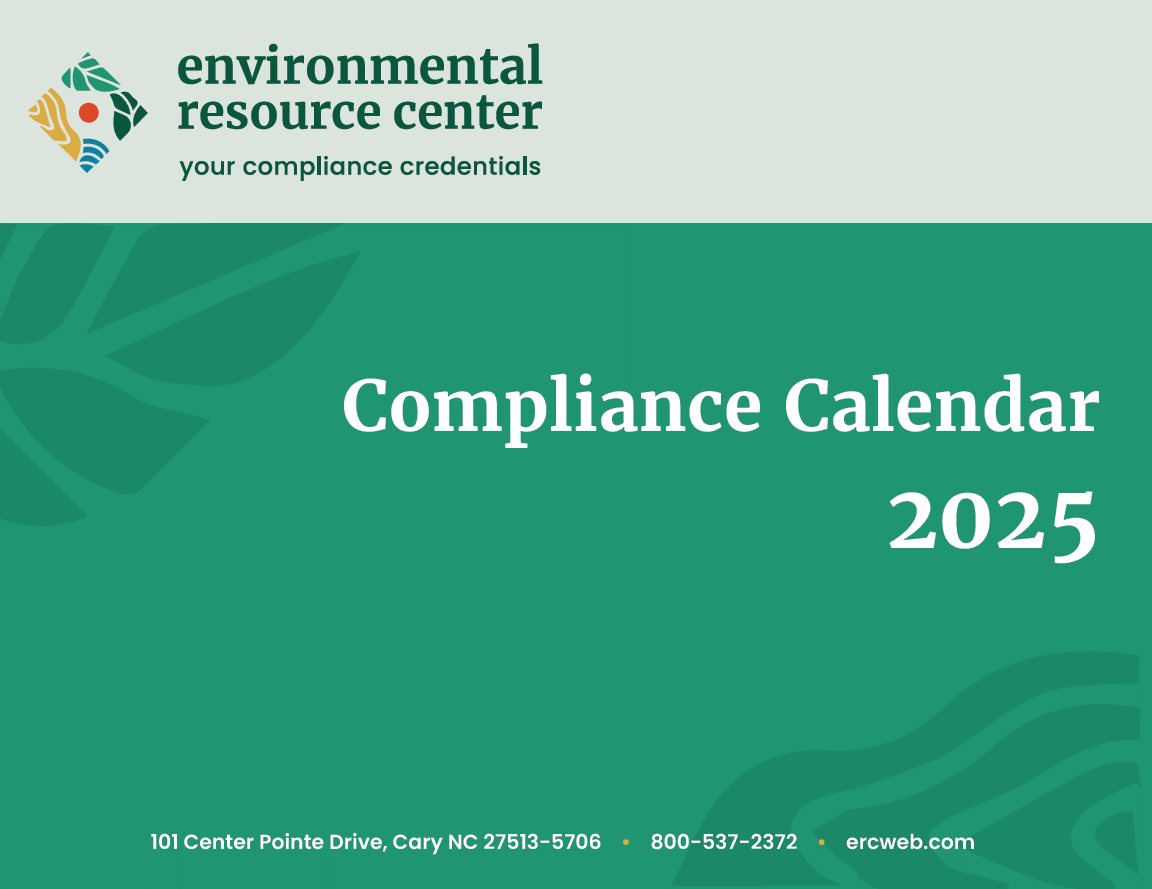 The International Air Transport Association (IATA) has released the 2025 edition of key industry manuals for cargo and ground handling operations, which incorporate over 350 changes and revisions needed to align with evolving industry standards and state and operator variations.
The International Air Transport Association (IATA) has released the 2025 edition of key industry manuals for cargo and ground handling operations, which incorporate over 350 changes and revisions needed to align with evolving industry standards and state and operator variations.Highlights include:
Dangerous Goods Regulations (DGR)
- Ten additional new dangerous goods, such as sodium-ion batteries and fire suppressant dispersing devices.
- Three new entries for battery powered vehicles, depending on the type of battery providing the power.
- Additional safety mitigation is being introduced with the “State of Charge” at which batteries are shipped.
Battery Shipping Regulations (BSR)
Previously called the lithium battery shipping regulations, this manual has been expanded to include other battery types, such as:
- Sodium-ion batteries with organic electrolyte,
- Wet, spillable batteries, filled with acid or alkali,
- Non-spillable and other lightly regulated batteries.
Live Animals Regulations (LAR)
- CITES (Convention on International Trade in Endangered Species of Wild Fauna and Flora) and IUCN (The International Union for Conservation of Nature) species database references included.
- Updated specifications for containers used for animal transport.
Supplementing the information contained in the manuals, IATA's ONE Source platform offers free industry access to validate aviation capabilities and infrastructure—including temperature-controlled rooms and special handling facilities—further improving the handling of special cargo shipments.
Key stakeholders in the aviation value chain—including airlines, airports, ground service providers, freight forwarders, shippers, and manufacturers—rely on IATA standards to promote safe, sustainable and efficient operations. In addition to IATA’s standard-setting work, the IATA manuals reflect the Standards and Recommended Practices agreed by governments through the International Civil Aviation Organization (ICAO) and other recognized standard-setting bodies.
“Global standards have made flying safe and reliable. For eight decades IATA’s member airlines have worked with the industry value chain, including regulators, on standard setting and best practices which are critical to daily operations. This year’s IATA manual offering includes over 350 changes, many of which reflect the constantly modernizing technology, regulations and evolving customer needs, along with the industry’s priorities of digitalization and sustainability,” said Frederic Leger, IATA’s Senior Vice President of Commercial Products and Services.
All manuals are available in digital format, in addition to printed versions.
 California’s Department of Industrial Relations (DIR) has posted guidance for protecting workers involved in fire debris removal and cleanup. “Even after fires are extinguished, hazardous conditions persist,” notes the state agency’s news release. “Employers involved in recovery operations within fire-damaged areas must assess these risks, address unsafe conditions, and ensure proper training is provided to all workers.”
California’s Department of Industrial Relations (DIR) has posted guidance for protecting workers involved in fire debris removal and cleanup. “Even after fires are extinguished, hazardous conditions persist,” notes the state agency’s news release. “Employers involved in recovery operations within fire-damaged areas must assess these risks, address unsafe conditions, and ensure proper training is provided to all workers.”This guidance includes DIR’s wildfire cleanup training tool (PDF), a fact sheet available in English and Spanish. The tool advises cleanup workers to protect their health by coordinating with hazmat crews, wetting work areas to control dust, wearing personal protective equipment and long-sleeved clothing, avoiding heat stress, and taking steps to avoid bringing dust into their homes.
The DIR news release directs visitors to the state agency’s webpage on cleanup and rebuilding after wildfires. In turn, this page links to resources for workers during wildfires and response efforts from Cal/OSHA and the state Labor Commissioner’s Office (LCO), as well as to relevant information about workers’ compensation, public works cleanup and rebuilding, and tree work safety. DIR also stresses that workers have rights to safety, evacuation, communication and cellphone access, time off, and pay, including disability benefits, during emergency conditions. California workers can learn more information about their legal protections during wildfires from LCO.
Workers in California with safety and health questions may contact Cal/OSHA, and those with questions about labor laws may contact LCO. Safety and health complaints may be filed with Cal/OSHA district offices.
 NIOSH has assessed exposures to per- and polyfluoroalkyl substances among firefighters and other Maui County employees involved in the first five days of response to the 2023 Maui wildfires. Higher concentrations of PFAS were found in blood samples submitted by firefighters compared to other first responders, according to a Morbidity and Mortality Weekly Report published by CDC on Feb. 6.
NIOSH has assessed exposures to per- and polyfluoroalkyl substances among firefighters and other Maui County employees involved in the first five days of response to the 2023 Maui wildfires. Higher concentrations of PFAS were found in blood samples submitted by firefighters compared to other first responders, according to a Morbidity and Mortality Weekly Report published by CDC on Feb. 6.Thousands of structures were destroyed and 102 people lost their lives in the wildfires that burned throughout August 2023 in Maui, Hawaii, the MMWR states. Maui County firefighters, police officers, public works employees, and ocean safety officers—members of the island-wide public lifeguard service—participated in fire suppression, structure protection, water rescue, evacuation, and urban search and rescue. In September 2023, NIOSH medical and exposure assessment staff and a CDC logistician traveled to Maui County at the request of local officials. The NIOSH and CDC team analyzed blood samples provided by 258 Maui County employees who participated in the initial wildfire response, including 178 firefighters.
Agency staff evaluated the summed concentrations of seven PFAS, as well as concentrations of perfluorohexane sulfonic acid, or PFHxS, in first responders’ blood serum. PFHxS is one of the most biologically persistent PFAS, the report states. Among firefighters, the median summed concentration of seven PFAS was 7.0 μg/L, whereas the median summed concentration for other occupations ranged from 5.7 to 6.9 μg/L. The highest concentrations of PFHxS were also detected among firefighters, with a median concentration of 1.2 μg/L.
One firefighter was found with a PFHxS serum concentration of 9.3 μg/L, about twice the 95th percentile concentration for PFHxS in data collected by CDC’s National Health and Nutrition Examination Survey during the 2017 and 2018 survey years. This firefighter also had a summed PFAS concentration above 20 μg/L, the clinical threshold set by the National Academies of Sciences, Engineering, and Medicine. As NASEM recommends that clinicians screen individuals with PFAS concentrations above this threshold for cancer and other health effects, this firefighter was advised to consult a healthcare provider.
In general, firefighters with job tenures of 30 years or longer had higher summed PFAS concentrations, the MMWR states. A few outliers occurred among firefighters who had been on the job for less than five years. Firefighters were invited to enroll in the National Firefighter Registry for Cancer, which was created through the Firefighter Cancer Registry Act of 2018, for long-term surveillance.
According to CDC’s report, firefighters may be exposed to PFAS in fire effluents and dust, contaminated gear or equipment, protective clothing, and firefighting foams. Other studies have found that firefighters have higher blood serum concentrations of PFHxS and other PFAS compared to the general and other working populations. PFAS exposure is associated with cancer, changes in cholesterol levels, and other adverse outcomes.
The report notes that although firefighters in this assessment had higher concentrations of some PFAS in their blood than employees in other occupations, most firefighters’ PFAS concentrations were below relevant clinical thresholds. Although inconsistent use of personal protective equipment may increase firefighters’ risk of exposure to PFAS, it is unclear how much the 2023 Maui wildfires contributed to PFAS concentrations in firefighters’ blood. Samples were collected about one month after the initial response and no baseline samples were provided. However, the findings of this MMWR are “useful to advancing understanding of health implications and guiding public health decision-making for ongoing and future fires,” the report states.
 New guidance published by Britain’s Health and Safety Executive (HSE) is intended to help protect workers on maternity wards from exposure to nitrous oxide, a colorless anesthetic gas used in healthcare. Nitrous oxide is commonly mixed with oxygen to help control pain during childbirth, presenting an exposure risk to workers who spend extensive time in labor rooms. Workers’ risk of exposure to higher levels of nitrous oxide depends on how well exhaled gas from women in labor is controlled, according to HSE. Symptoms of exposure to nitrous oxide include difficulty breathing, drowsiness, and headache, notes the NIOSH Pocket Guide to Chemical Hazards, while HSE stresses that exposure to high levels of the gas over time can cause health effects like neurological problems and anemia. HSE’s long-term workplace exposure limit for nitrous oxide is 100 ppm or 183 mg/m3 as an eight-hour time-weighted average. For comparison, the NIOSH recommended exposure limit for exposure to waste anesthetic gas is 25 ppm or 46 mg/m3 as a time-weighted average over the time exposed. There is no OSHA permissible exposure limit for nitrous oxide.
New guidance published by Britain’s Health and Safety Executive (HSE) is intended to help protect workers on maternity wards from exposure to nitrous oxide, a colorless anesthetic gas used in healthcare. Nitrous oxide is commonly mixed with oxygen to help control pain during childbirth, presenting an exposure risk to workers who spend extensive time in labor rooms. Workers’ risk of exposure to higher levels of nitrous oxide depends on how well exhaled gas from women in labor is controlled, according to HSE. Symptoms of exposure to nitrous oxide include difficulty breathing, drowsiness, and headache, notes the NIOSH Pocket Guide to Chemical Hazards, while HSE stresses that exposure to high levels of the gas over time can cause health effects like neurological problems and anemia. HSE’s long-term workplace exposure limit for nitrous oxide is 100 ppm or 183 mg/m3 as an eight-hour time-weighted average. For comparison, the NIOSH recommended exposure limit for exposure to waste anesthetic gas is 25 ppm or 46 mg/m3 as a time-weighted average over the time exposed. There is no OSHA permissible exposure limit for nitrous oxide.HSE’s guidance describes three types of control measures used to address the risk of occupational exposure to nitrous oxide, in order from most to least effective: a demand valve and mouthpiece or facemask used to capture patients’ exhaled breath, an extraction or scavenging system with an extraction unit located close to patients’ breathing zones, and general ventilation. HSE explains that a demand valve and mouthpiece or facemask system is most effective “because the exhaled air is not released back into the room, as long as the mouthpiece or facemask is not removed before the patient exhales.” General ventilation alone “is unlikely to achieve adequate control” due to its distance from the source and because it relies on the effectiveness of room ventilation, the guidance states.
Other topics covered in the guidance include exposure monitoring and the role of effective management systems in controlling the risk of exposure to nitrous oxide.
The new guidance was developed by HSE, Britain’s national regulator for workplace health and safety, in collaboration with maternity specialists in the National Health Service, the U.K.’s publicly funded healthcare systems. It can be found on the HSE website. According to HSE, the guidance is also relevant to health and safety professionals working in other parts of the healthcare sector in which nitrous oxide is used.
 The Division of Occupational Safety and Health, known as Cal/OSHA, has cited employers Smelly Mel’s Plumbing and Sewer Rat Plumbing a total of $529,640 in proposed penalties for violating safety regulations that resulted in serious injuries to a construction worker during a trench collapse in San Mateo on August 1, 2024.
The Division of Occupational Safety and Health, known as Cal/OSHA, has cited employers Smelly Mel’s Plumbing and Sewer Rat Plumbing a total of $529,640 in proposed penalties for violating safety regulations that resulted in serious injuries to a construction worker during a trench collapse in San Mateo on August 1, 2024.Cal/OSHA, a division of the Department of Industrial Relations, found a total of 16 violations, evenly split between both businesses. Among these citations were two willful, serious accident-related violations–meaning the businesses were aware of the safety hazards, had prior warning, and still failed to take corrective action.
What Cal/OSHA Chief Debra Lee said: “Trench collapses remain one of the most serious hazards in construction, and employers must take all necessary steps to protect their employees. These citations serve as a reminder that businesses must prioritize worker safety, especially during high-risk operations to avoid tragic accidents.”
What happened: On August 1st, 2024, a crew was handling a sewer line project at a private residence in San Mateo. The job took a near-deadly turn when the walls of the trench collapsed, burying a worker under the debris and causing serious injuries that required hospitalization.
Key Violations and Safety Lapses: The citations issued include violations for improper protective systems, inadequate training, and failure to inspect the trench and surrounding conditions including:
- Inspection Failure: Employers did not ensure that a competent person conducted daily inspections of the trench, adjacent areas, and protective systems that could have detected hazardous conditions such as cave-ins.
- Lack of safe exit routes: Both employers failed to provide the construction workers a ladder or other safe means of exiting the trench that was approximately 9 feet and 3 inches in depth.
- No adequate protective systems in trench: Neither employer provided adequate protective systems, such as shoring, shielding, sloping, or benching to the trench to prevent its collapse.
- Failure to protect workers from falling debris: Neither employer protected their workers from excavated materials or equipment that could pose a hazard by falling or rolling into the trench.
- Foot Protection: The employer failed to ensure that their workers had proper foot protection, which exposed at least one worker to foot injuries when using a jackhammer.
- Insufficient emergency medical provisions: The employers did not have an appropriate number of trained persons to render first aid at the jobsite.
- Permit Requirements: The employers failed to notify the division prior to the start of the annual permit-required activity of constructing an excavation over 5-feet in depth.
- Injury and Illness Prevention Program: The employers failed to conduct a toolbox safety meeting at the jobsite with the crew for the duration of the project.
Employers have the right to appeal any Cal/OSHA citation and notification of penalty by filing an appeal with the Occupational Safety and Health Appeals Board within 15 working days from the receipt of notification.
 The EPA has announced a settlement with Super Center Concepts, Inc. (dba Superior Grocers) over claims of illegal distribution of two unregistered disinfectant products. Under the settlement, the company will pay $253,909 for the violations. The company no longer distributes these disinfectants or offers them for sale.
The EPA has announced a settlement with Super Center Concepts, Inc. (dba Superior Grocers) over claims of illegal distribution of two unregistered disinfectant products. Under the settlement, the company will pay $253,909 for the violations. The company no longer distributes these disinfectants or offers them for sale.A California Department of Pesticide Regulation inspection at Superior Grocers’ Santa Ana location, followed by an EPA investigation, revealed that the company had distributed “Home Line Antibacterial Wipes,” an unregistered disinfectant that claimed it was “antibacterial” and “kills germs,” to 47 stores throughout California in 2020. In addition, both this product and another unregistered disinfectant that claimed “to kill 99% of germs and bacteria” and advertised “effectively eliminating the Coronavirus and other germs,” Ha Ha Fu Sterilized Wet Wipes, were offered for sale by the company from its Santa Ana location.
Under the Federal Insecticide, Fungicide, and Rodenticide Act (FIFRA), products claiming to kill or mitigate pests on surfaces, including microorganisms, must be registered with the EPA before being sold or distributed. Registration ensures that products have been properly tested and meet federal safety standards. Neither product underwent EPA's registration process to verify safety and efficacy claims.
"Distributing unregistered disinfectants is a serious violation that can put the public’s health at risk," said EPA Enforcement and Compliance Assurance Division Acting Director Joel Jones. "This action reinforces EPA's commitment to protect Americans by ensuring that products meet federal safety and efficacy requirements."
Unregistered products can be harmful to human health, cause adverse effects, and may not be effective against the spread of germs. Registration and labeling requirements under federal law protect human health by ensuring these sorts of products are tested in accordance with specific guidelines and can be safely used for their intended purposes.
Find the most up-to-date list of EPA-registered disinfectant products and more information on pesticide registration.
News Links
Trivia Question of the Week



